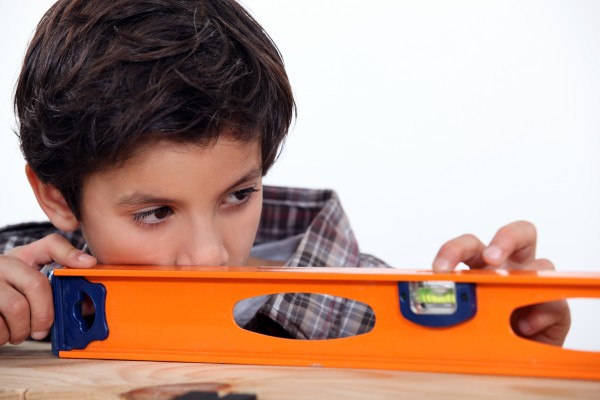The first step in improving anything is to measure it. We have known this for years, going all the way back to our college days when we were first introduced to the likes of Peter F. Drucker, famous writer, management consultant, and university professor. Drucker is credited with the quote, “What’s measured improves.” This  principle has without doubt been applied to your school system’s academics, but what about the operational, non-instructional areas within your district?
principle has without doubt been applied to your school system’s academics, but what about the operational, non-instructional areas within your district?
Departments such as Transportation and Child Nutrition routinely report key measurements to state and federal agencies. However, this data may or may not prove to be beneficial for driving improvement, as the numbers presented are often a conglomerate of the performance of multiple buses or schools. Other times, we may begin to measure everything easy to measure without understanding how to use the data. These numbers may leave you feeling either good or bad regarding your school system’s performance but provide no practical foundation for knowing where improvements can be made. For performance measures to drive improvement, it is just as vital to know “how” to measure as to know “what” to measure. Measuring a few of the right items in the right way can produce great results for your district.
Below are eight performance measurements of two critical non-instructional areas – Facilities and Maintenance and Child Nutrition. Measuring these indicators can help your school system drive improvements and ensure your district is making the most of available resources. More importantly, though, we have gone so far as to tell you how these measurements should be taken in order to optimize analysis, enable quick comparisons, and find “bright spots” of best practices to share or find “abnormal conditions” that should be quickly addressed.
4 Simple Things to Measure in Facilities and Maintenance
1. Facilities and Maintenance Cost by Facility per 1,000 Square Foot
Total Facilities & Maintenance expenditures, including labor, benefits, supplies and other expenditures spent by facility, divided by building square footage multiplied by 1,000.
2. Water Usage per Facility per 1,000 Students by School
Monthly water cost by facility divided by number of students present at the facility multiplied by 1,000.
3. Electricity Usage per Facility per 1,000 Square Foot by School and/or Electricity Usage per Facility per 1,000 Students by School
Monthly electricity by facility cost divided by the building square footage multiplied by 1,000 and/or monthly electricity cost by facility divided by number of students present at the facility multiplied by 1,000. One or the other or both of these approaches may be best, depending on overall building utilization.
4. Custodial Workload By School/Facility
Total facility square footage divided by the total number of custodians.
4 Simple Things to Measure in your Child Nutrition Program
1. Meals per Labor Hour by School Kitchen
Total number of meal equivalents served divided by total labor hours paid to food service staff per school kitchen.
2. Breakfast Participation by School Grouped by School Type (e.g., Elementary, Middle, and High Schools)
Total number of breakfasts served daily divided by average daily attendance per school, then grouped by school type.
3. Lunch Participation by School Grouped by School Type (e.g., Elementary, Middle, and High Schools)
Total number of lunches served daily divided by the average daily attendance per school, then grouped by school type.
4. Cost per Meal Equivalent Served by School Kitchen
Cost of food expenditures divided by the total number of meal equivalents served monthly by school kitchen.
Using the measurements noted above provides normalized data that can be quickly used for comparisons across the school district on month-to-month basis. You may be surprised to find that, while you have strong composite measures, there are “bright spots” of opportunities that should be reviewed in detail to determine whether they can be transferred across the district. These opportunities may serve to improve performance even more, or the reverse might be true. You may find that, while the composite measure shows a lackluster result, some schools or areas are performing strongly. These practices could be transferred across the district and change a negative performance to a positive one.
One of our clients, a large municipal district, quickly realized one school had a severe water leak not obviously recognizable to school faculty or staff. The water leak was discovered through the above measurement in that it reflected a significantly higher cost per 1,000 students than any other school in the district. The data initiated a detailed investigation, which uncovered the massive leak and saved the district a significant amount in utility costs. An in-depth review of the data indicated this leak had been occurring over several years.
You may wonder why we provided only eight measurements across two departments. Rather than measuring everything you possibly can within each non-instructional department, we recommend a focus on those items that can drive action resulting from taking the measurement. Also, it is possible to establish so many measurements that you eventually create measurement paralysis. We recommend to initially conduct limited performance measurements, no more than three or four per department/area.
As Drucker stated, “What’s measured improves.” Use the above eight simple measurements in your non-instructional areas starting today to see what kind of results you can drive.
If you have questions about how your school district can use the above measurements, feel free to ask via email at byron@theleanleap.com.